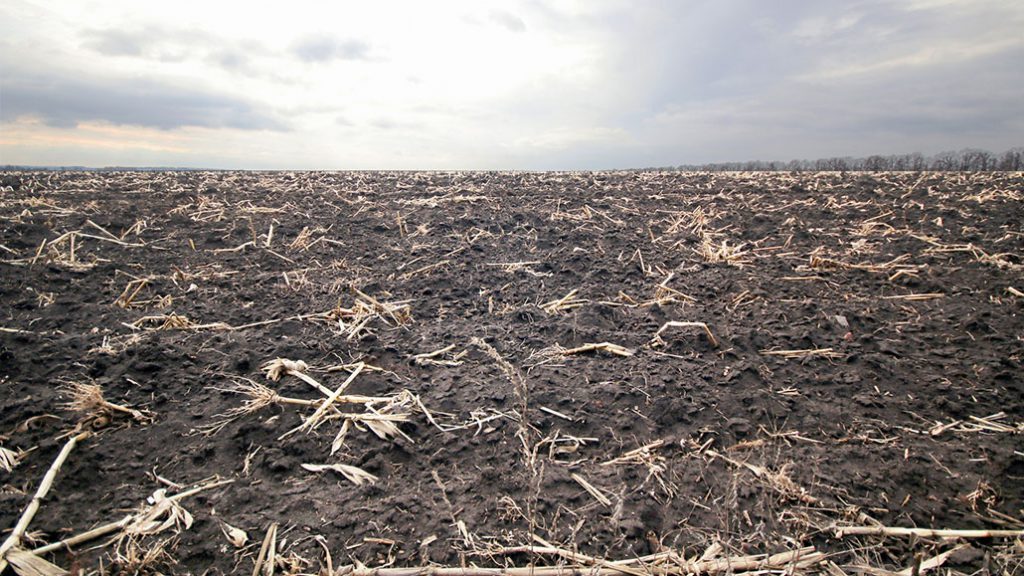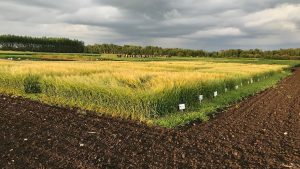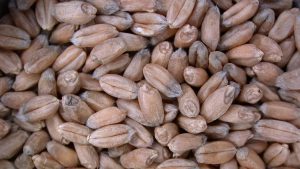Using alternative fertilizers
CLASSIFICATION AND REGULATION OF NASM

MANY FARMERS USE biosolids and other alternative organic amendments in their soil management strategy. However, regulations around the storage and use of such products can be complex in comparison to more conventional sources of fertility.
Fundamentally, the rules for using them vary depending on local conditions. Farmers looking to use such products need to work with the province, as well as the amendment generator, to ensure they are used in a safe and environmentally friendly way.
WHAT IS NASM?
Farm-derived products, such as manure, as well as conventional fertilizer are considered Agriculture Source Material (ASM). Conversely, Non-Agricultural Source Material (NASM) is the general name for specific types of treated and recycled waste products that have been externally generated, but can be applied to agricultural land as fertilizer or organic amendments. Biosolids are a specific type of NASM.
NASM products have been available to Ontario farmers as alternative fertilizers for three decades. The Ontario Ministry of Agriculture, Food and Rural Affairs (OMAFRA) lists leaf and yard waste, fruit and vegetable peels, food processing waste, pulp and paper biosolids, as well as sewage biosolids as the main NASM categories. NASM does not include untreated septage, commercial fertilizers, and some grades of compost. Farmers can access NASM from a variety of sources, including municipalities and food processors.
According to the ministry, registered NASM products can be a cost-effective way of improving soil productivity, reducing soil erosion, and adding valuable nutrients for crop production. However, the level of savings varies based on the crop, the type of NASM used, and the management practice employed in applying the input.
APPLICATION AND STORAGE
Dale McComb, an OMAFRA environmental specialist, and Benoit Lebeau, a NASM engineer with OMAFRA, understand there can be a lot of confusion with the rules regarding the management of different types of NASM. Storage and land application are often the most questioned, because each NASM has a specific definition and requirements, which are often “very site and situation dependent.”
As described by OMAFRA resources, there are extensive regulatory requirements on what can be stored where, for how long, and in what way. Some general standards include the following:
- A permanent nutrient storage facility or a temporary field nutrient storage site must be used to store material if the storage period will last longer than 24 hours.
- Temporary field storage of some NASM (those categorized as “solid”) is allowed, if the appropriate regulatory requirements for the specific material and storage environment are met.
- Liquid NASM can be stored in tanks, but tank capacity is limited to the amount that can be spread in one day. The capacity of the tank cannot exceed the amount of material that will be applied to the NASM application area in one day.
- Category 3 NASM (the smelliest products) cannot be stored in-field.
- Soil characteristics, material characteristics, location, management requirements, and many other factors are all considered before a field site can be approved as a storage location.
Application standards vary based on the category and other qualities of the NASM being applied. These limit where, when, how much, and by what method the product can be applied under different conditions and circumstances. These are some general examples:
- NASM cannot be land applied if the content of a regulated metal or E. coli exceeds predetermined thresholds. The same applies for odour.
- Restrictions can apply if soil tests indicate unfavourable pH, phosphorous, and metal concentrations (all soils must be tested before NASM can be used).
- Safe distances from “sensitive features” such as like waterways and homes must be maintained during application.
- Mandatory pre-harvest and pre-grazing periods for certain crops exist.
- Contingency plans in case of spills are required for some NASM categories.
REGULATORY ENFORCEMENT
Because biosolids and other NASM are recycled products, the provincial government enforces quality-assurance, safety, and environmental regulations on both generators and end-users.
On the farm, this starts by requiring farmers to sign a NASM plan, comply with Nutrient Management Act guidelines on storage, application, and post application practices (such as waiting periods).
OMAFRA approves – MOECP enforces
NASM plans must be created in conjunction with an OMAFRA-certified NASM plan developer, with the Ministry holding final plan approval. The ministry also oversees additional training, as well as other requirements for safe application, and notifies local municipalities whenever a plan is approved within its jurisdiction.
Temporary field storage sites are described in the plan by the NASM plan developer, says McComb. If the site is shown to be compliant with the regulations, it is approved in the NASM plan approval.
The Ministry of Environment, Conservation and Parks (MOECP) is responsible for enforcing regulatory compliance in all aspects of NASM use, including storage. This is done through either proactive inspections or NASM complaint response. The MOECP employs the Environmental Protection Act, as well as the Ontario Water Resources Act, if issues might occur or have occurred.
GETTING A NASM PLAN
McComb and Lebeau say farmers interested in applying most NASM products should consult and develop a plan with a certified NASM plan developer. This includes testing soil for nutrients, pH, as well as 11 regulated elements such as metals present within the area. The plan is then submitted to OMAFRA and reviewed to ensure all regulatory requirements have been met. Municipalities are notified of approved plans by the Ministry.
Mary-Anne Rombouts, a nutrient management consultant and certified NASM planner based near Strathroy, says the actual planning process is not always uniform.
“If it’s a new NASM material, I like having it analyzed first to confirm that it can be land applied. Then I meet with the farmer and do a site visit while taking soil samples,” she says.
“During the visit I mark-out all sensitive features and measure the slope of the field. I’ll ask the farmer questions about their operation, cropping practices, and NASM storage if applicable.”
She adds a land application schedule (LAS) needs to be prepared prior to every application of a NASM. A post-application report (PAR) also needs to be completed after each application.
While there is no cost to submit a NASM plan, someone does have to pay for the development of the plan and all associated testing. Rombouts says this can be either the farmer or the NASM generator, depending on their agreement.
LEGAL RESPONSIBILITY
McComb and Lebeau say all parties have legal responsibilities in the process. However, Rombouts says the farmer takes the lion’s share.
The farmer, that is, needs to provide advance written notice to the local MOECC district office if they are applying certain types of NASM materials. A copy of the NASM plan also needs to stay at the farm at all times. If the farmer is not applying the product themself, the custom applicator is responsible for following plan specifications, as well as providing information for the PAR.
“The NASM generator is responsible for getting the material analyzed,” Rombouts says, adding the plan itself must be renewed every five years.
NASM AND 4R PRINCIPALS
Marty Vermey, Grain Farmers of Ontario’s senior agronomist, says current 4R certification by retailers does not take NASM or manure management into account. Certification is instead currently based on commercial fertilizer application, though work is being done to incorporate manure into the 4R management program.
“Since NASM is applied to the soil, many in the ag-sector would like it to also be managed with 4R principals,” says Vermey.
Rombouts reiterates some mainstays of nutrient application do exist within the regulations. Practices such as applying NASM on snow or frozen ground, for example, are prohibited. In her experience, too, she says most farmers using NASM do so primarily for its organic matter.
Fundamentally, McComb and Lebeau say there is no reason 4R concepts cannot be applied to NASM, though challenges do exist.
“Some of the 4R concepts that relate easily to commercial fertilizer are a challenge to both ASM and NASM […] things like the amount of phosphorus that can be added at one time under 4R can be a challenge for both manure and some NASM.”
They also highlight the differences between nutrient management regulations and the 4R program — the former involving regulatory limits on the amount of a given product, and the latter being a voluntary program for land application standards that, in some cases, can be more restrictive than existing regulations.
This article was written in response to a resolution brought forward by Grain Farmers of Ontario farmer-members. •

























